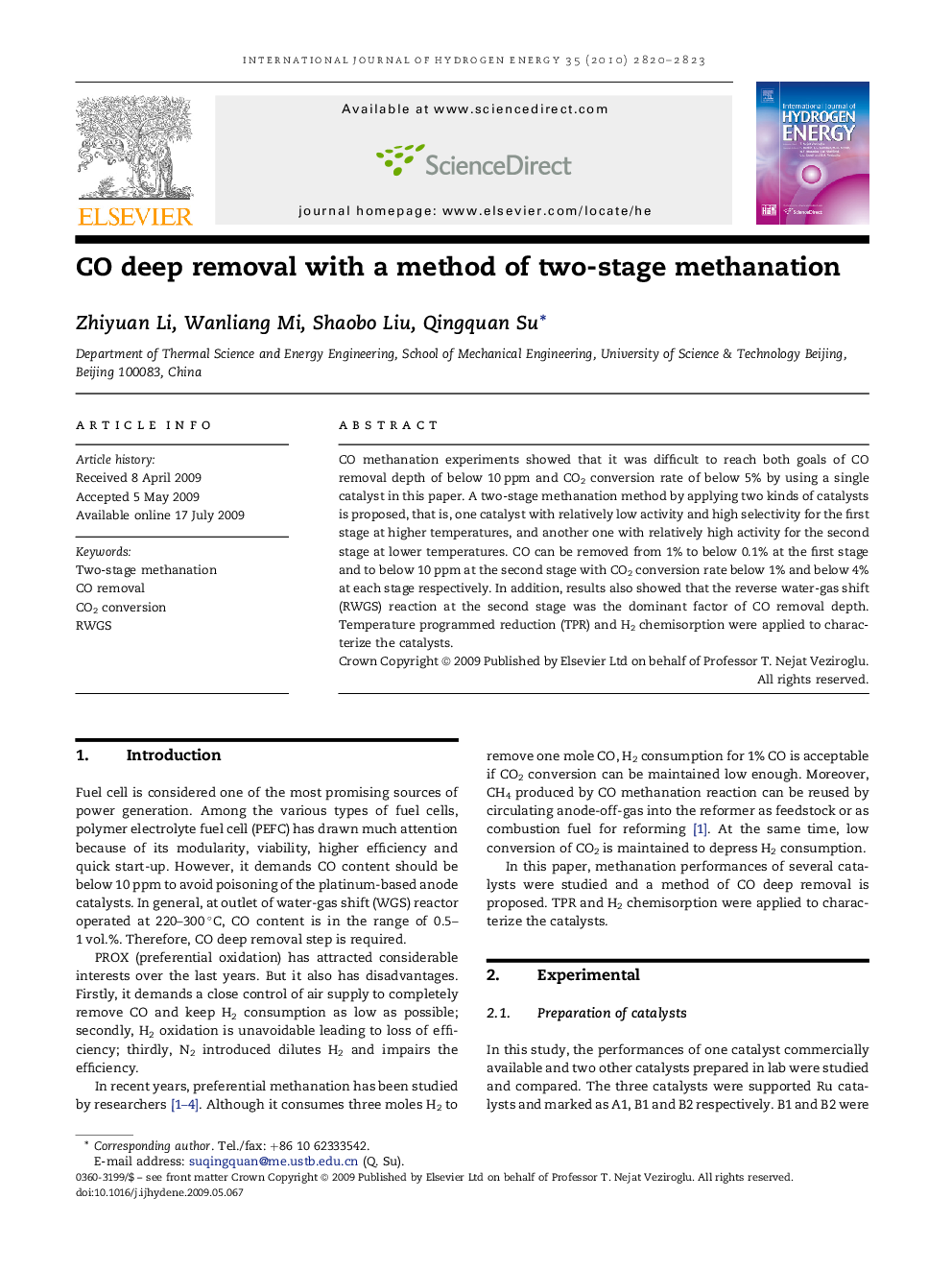| Article ID | Journal | Published Year | Pages | File Type |
|---|---|---|---|---|
| 1273263 | International Journal of Hydrogen Energy | 2010 | 4 Pages |
CO methanation experiments showed that it was difficult to reach both goals of CO removal depth of below 10 ppm and CO2 conversion rate of below 5% by using a single catalyst in this paper. A two-stage methanation method by applying two kinds of catalysts is proposed, that is, one catalyst with relatively low activity and high selectivity for the first stage at higher temperatures, and another one with relatively high activity for the second stage at lower temperatures. CO can be removed from 1% to below 0.1% at the first stage and to below 10 ppm at the second stage with CO2 conversion rate below 1% and below 4% at each stage respectively. In addition, results also showed that the reverse water-gas shift (RWGS) reaction at the second stage was the dominant factor of CO removal depth. Temperature programmed reduction (TPR) and H2 chemisorption were applied to characterize the catalysts.
